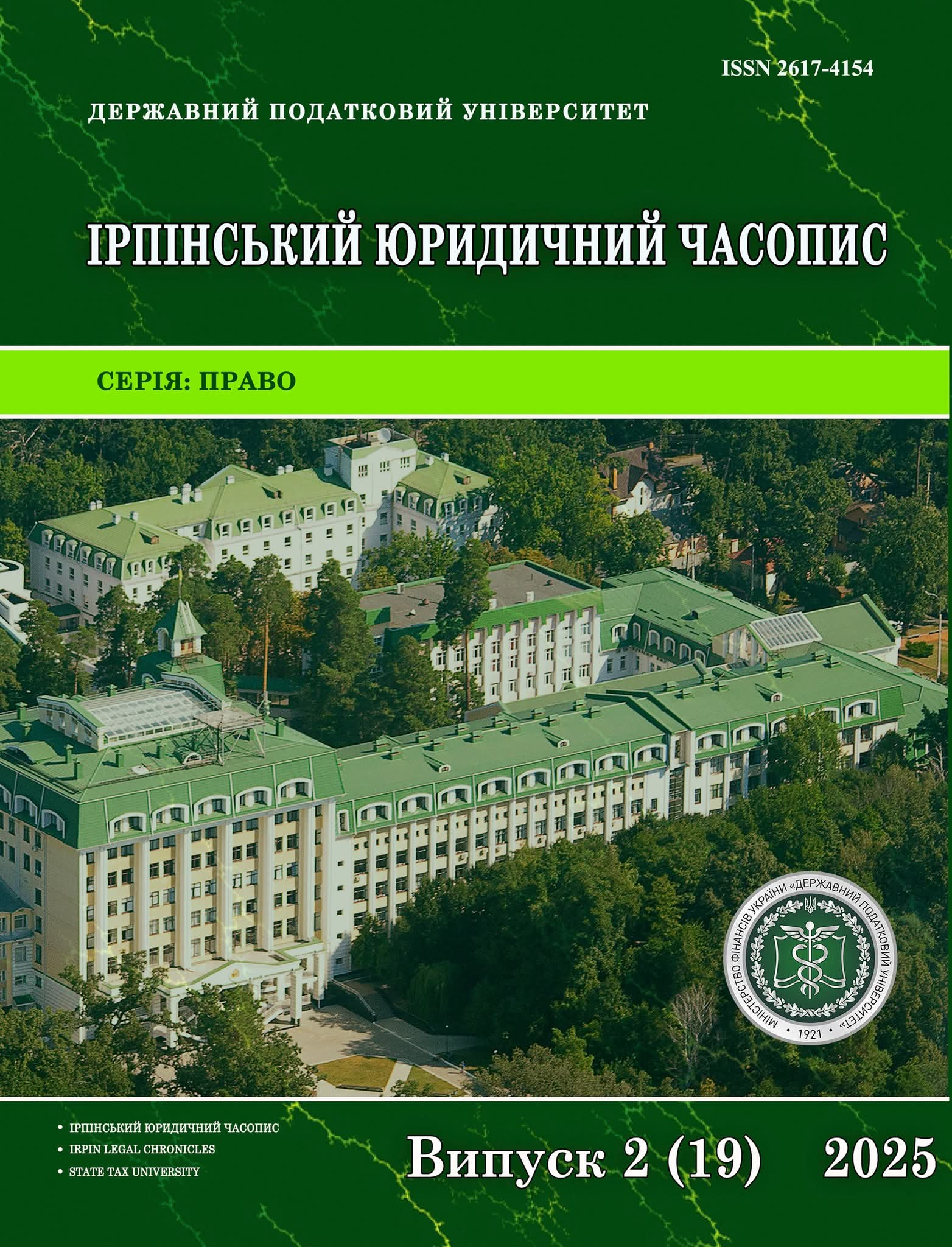ПРАВО НА МИР: СУЧАСНЕ РОЗУМІННЯ ТА НОВІ ВИКЛИКИ
DOI:
https://doi.org/10.33244/2617-4154-2(19)-2025-73-82Ключові слова:
право на мир, міжнародне право прав людини, міжнародне гуманітарне право, адаптація міжнародного права, тлумачення права, міжнародні організації, глобальні виклики, сталий розвитокАнотація
чення, еволюціонуючи у відповідь на глобальні виклики, такі як кліматичні зміни, кібербезпека та пандемії. Зміна характеру конфліктів, глобалізація та зростання ролі недержавних суб’єктів вимагають переосмислення традиційних підходів до забезпечення миру. Аналіз еволюції тлумачення права на мир є ключовим для розуміння сучасних тенденцій у міжнародних відносинах.
Метою цього дослідження є оцінка адаптації міжнародного права до нових форм конфліктів та викликів у контексті забезпечення права на мир, аналіз юридичних аспектів російської агресії, зокрема порушень міжнародного гуманітарного права та міжнародного права прав людини, а також оцінка реакції міжнародного співтовариства з точки зору міжнародного права.
У дослідженні використано комплексний підхід, що охоплює аналіз міжнародно-правових норм, міжнародних судових рішень, документів міжнародних організацій та наукових праць. Застосовано методи системного аналізу, порівняльного правознавства та міждисциплінарного підходу, що об’єднує знання з правознавства, політології, економіки та соціології.
Дослідження показало, що поняття «право на мир» еволюціонувало, охоплюючи не лише відсутність збройних конфліктів, але й відсутність насильства в будь-якій формі, створення умов для сталого розвитку та забезпечення прав людини. Індивідуалізація права на мир відображає зростання розуміння того, що мир – це право кожної людини. Міжнародне право прав людини та міжнародне гуманітарне право взаємодоповнюють одна одну, створюючи комплексну систему захисту людського життя та гідності.
Міжнародне право, як система, постійно адаптується до нових форм конфліктів та викликів. Для ефективного забезпечення права на мир необхідний комплексний підхід, що охоплює міжнародно-правові механізми, економічні, соціальні та політичні заходи. Важливу роль відіграють недержавні суб’єкти, як-от громадянське суспільство, міжнародні організації та бізнес. Потрібно вдосконалювати поняття «право на мир», розвивати інструменти забезпечення миру та посилювати роль недержавних суб’єктів. Ключовими чинниками є виявлення та запобігання конфліктам.

